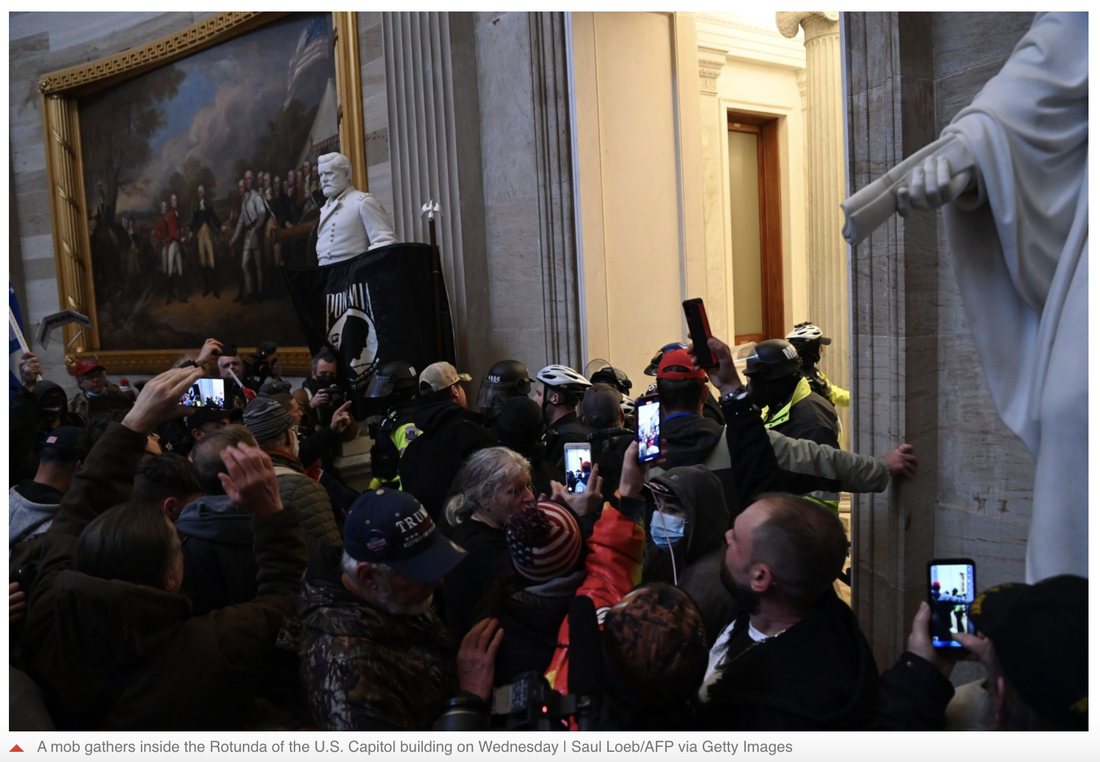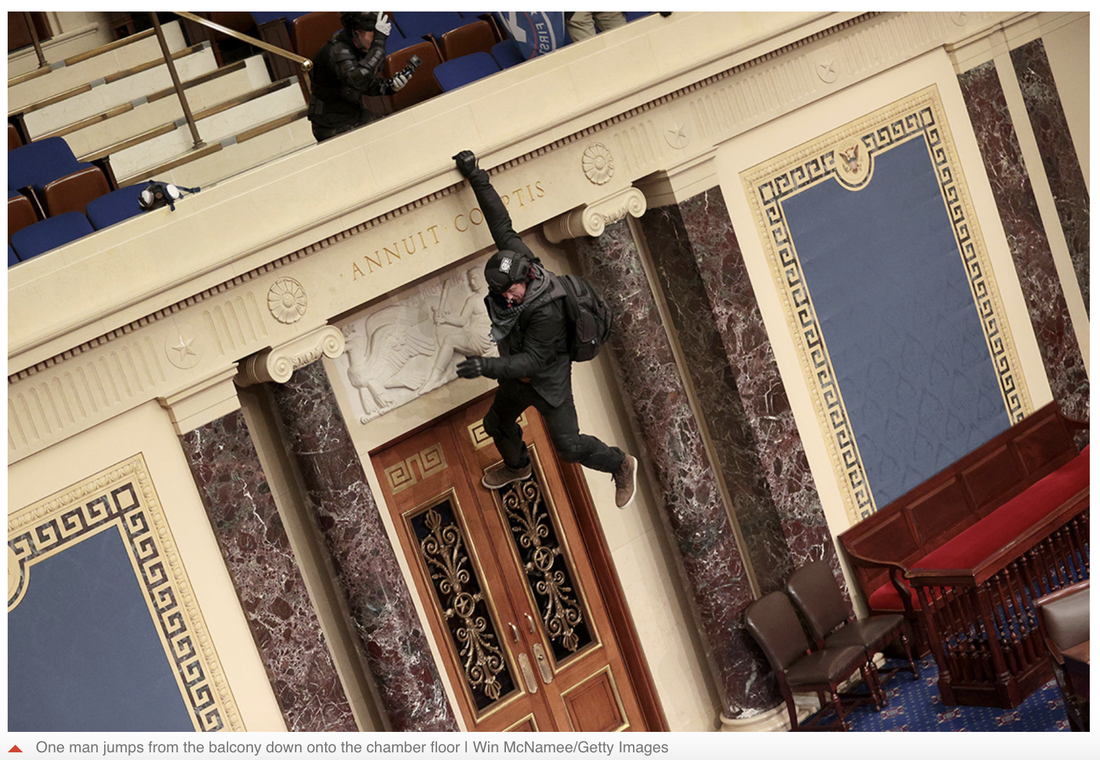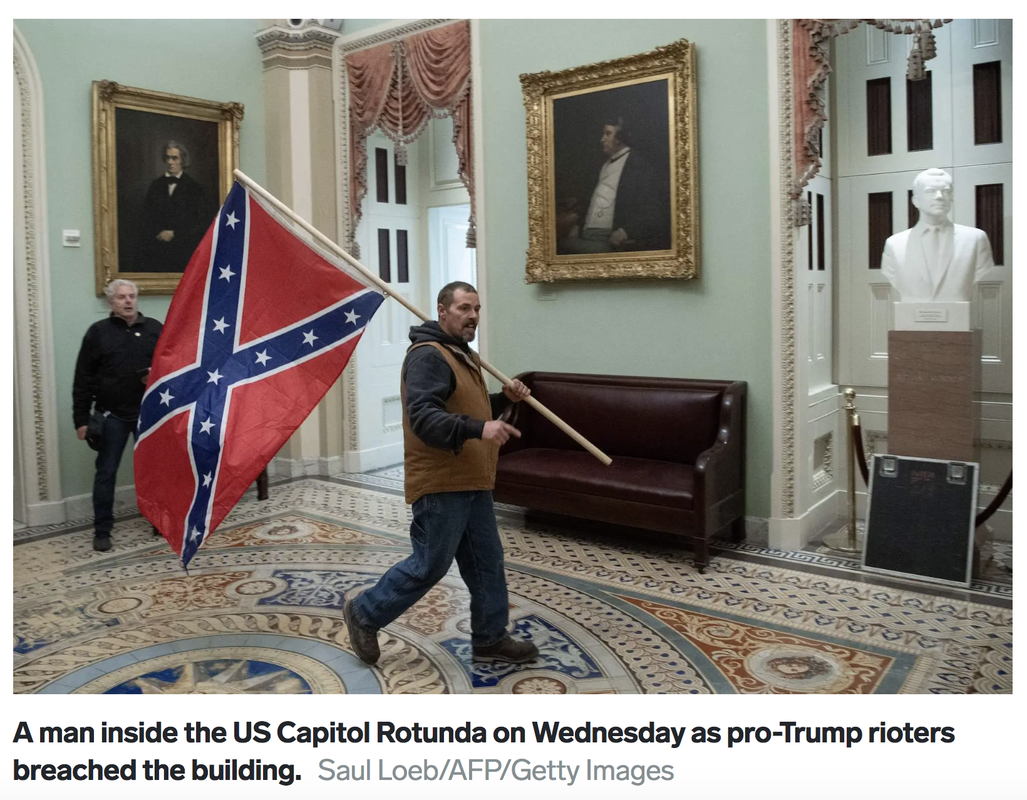|
The horror in Washington, D.C. on January 6th was nothing short of a terrorist attack. Contextualizing these Trump supporters through a terrorism studies lens, clear parallels can be drawn to the incentives and actions of Islamic terrorists. Both groups seem to follow a cultural and social organization model based on victimization, and they approach the “performance” aspect of terrorism in a similar way. To call the violence in the U.S. Capitol building, and the contemporaneous attempted bombings across D.C., anything other than terrorism is to downplay the seriousness of the offenses and endanger our country. The Trump supporters who violently invaded the bastion of our democracy are terrorists and must be treated accordingly. The term “terrorist” is politically loaded and contentious. A study by Schmidt and Jongman in 1988 found 109 unique definitions of terrorism. When statistically broken down, the most common elements of these definitions include force and violence, political characteristics, and fear and terror at 83.5%, 65%, and 51%, respectively. The “rioters” from yesterday’s events meet all the main criteria. Yesterday was to be the certification of the Electoral College outcome by Congress, a formality that was only newsworthy because of President Trump’s continued denial of the results. In a dramatic and unprecedented scene, Trump’s supporters stormed the building in protest. Many were outfitted with firearms, an act illegal in and of itself, as guns are forbidden within 1,000 feet of protests in the District of Columbia and in government buildings. The insurrectionists physically fought with police officers as lawmakers and staffers lay on the ground, many of them praying, before they were evacuated. Two pipe bombs were discovered at an RNC office and in the Capitol complex itself and safely detonated elsewhere. Those who argue against the terrorist designation for these insurrectionists may point to the fact that only one life was lost inside the Capitol, and it was that of an instigator. However, the thwarted bombings point to attempted murder. At least one terrorist carried zip-ties, causing speculation that there may have been a hostage or kidnapping plot. But, more to the point, terrorism is less about the act of killing and more about the act of intimidation. According to the Department of Defense, terrorism is the “calculated use of unlawful violence or threat of unlawful violence to inculcate fear.” It is safe to say that this attack instilled fear in the hearts of Americans across the country: fear for the people inside the building, fear for democracy, fear of future attacks. If we are to label these Trump supporters as terrorists, we must try to understand them as such. Although it is tempting to group pro-Trump terrorists in with the religious theory of terrorism because of their cultish obsession with him as a Godlike figure (similar to the Japanese cult Aum Shinrikyo, responsible for the subway sarin attack in Tokyo), they seem to fit the cultural, or identity, theory best. Trump is the embodiment of his base’s culture: white supremacy, victimization, and xenophobia. Trump is an avatar for their discontent with a rapidly changing America, an enabler for their outdated ideals that are condemned by mainstream culture. The cultural difference between Trump supporters and other Americans is encapsulated in a recent viral tweet: “Now that Biden won, watch me not wear his name on my hat and not put a giant Biden flag on my truck and drive around with it for 4 years like a f****** weirdo.” The extreme wing of Trump supporters is motivated by their passion for their culture, their animosity to outsiders, and their feelings of victimization. Ironically, these motivations are strikingly similar to Islamic terrorists, even though Trump’s base tends to be anti-Muslim. Both seem to follow a natural systems model, which theorizes that organization participation is mainly motivated by kinship and shared culture, not political or religious goals. According to former acting Under Secretary of Defense for Personnel & Readiness at the Department of Defense and Congressman Brad Carson, most foot soldiers in Al Qaeda know nothing of Islam’s basic teachings. Recruitees are often young, socially isolated men who thirst for adventure, danger, and brotherhood. Similarly, it is not clear how much far-right extremists know about government or public policy. In fact, they reject reality and embrace fake news and conspiracy theories, like Q-Anon. Domestic terrorist analysts have noted a rise in “mass radicalization” due to disinformation. Even more concerning is that conspiracy theories have entered the mainstream media. Extremism is relative. Should the Republican Party continue its shift to the far right, the fringe will become normalized. At the root of both Islamic extremist groups and domestic extremists is a sense of victimization. Some experts believe Islamic radicalization sprang from anger over the economic transition from clientelism (a socioeconomic system with a focus on networks and clans) to market economics. In this age of globalization, traditional values of loyalty and honor clashed with capitalism and resulted in social anarchy and alienation. Ethnofascism, hypernationalism, antimarket socialism, and religious terrorism ensued. Those at the top of the economic ladder, such as Osama Bin Laden’s family, faced the most dire consequences, causing some of the most privileged members of society to turn to terrorism. A parallel process of victimization can be found in the radicalization of Trump extremists. White victimhood stretches back to the antebellum period, but has been a matter of particular interest in pop culture in recent years. In his memoir “Hillbilly Elegy,” author J.D. Vance elocuted the “feeling that you have little control over your life and a willingness to blame everyone but yourself” in a community that is “consumerist, isolated, angry, distrustful.” This subsection of the white working class fears outsiders, from Mexicans (because “they’re bringing drugs. They're bringing crime. They're rapists”) to Muslims (“There's a sickness. They're sick people. There's a sickness going on. There's a group of people that is very sick”) to Blacks (whose youths have reached “a point where they've just about never done more poorly, there's no spirit, there’s killings on an hourly basis”). All those quotes are from the terrorists’ leader, Donald J. Trump. Far-right whites fear losing the privilege they have enjoyed for generations, hence the despicable chant “Jews will not replace us” by neo-Nazis in the “Unite the Right” rally that took place in Charlottesville, VA in 2017. Both Islamic radicals and far-right American radicals feel alienated and victimized by transitions in a changing world. Yesterday’s Electoral College vote tally was likely not the only reason why these terrorists decided to target the Capitol building. There is a strong precedent of terrorists attacking structures that have symbolic value. As stated earlier, terrorism is not solely murder or anarchy. Terrorism is a type of “signaling,” a means of spreading a message. Terrorists want to tell a story and influence their audience. A key component of their “performance” is setting. Al Qaeda attacked the World Trade Center because it was an emblem of globalization, market economics, and American values. 2,977 Americans lost their lives that day. Timothy McVeigh, a far-right adherent to the Christian Identity movement, bombed the Murrah Federal Building in Oklahoma City to make an anti-government statement. He killed 168 people, 19 of whom were children. When terrorists invaded the Capitol yesterday, they made a similar statement as McVeigh. They rejected the rule of law, desecrated the Constitution, and attempted to subvert the American people’s decision in a fair election. Where better to signal their anarchist and un-American message than in the legislative heart of Washington, D.C.? We cannot tread lightly here. Time after time, government officials have treated far-right extremists as harmless. Even yesterday, there was a notable absence of substantial police force, the likes of which was seen constantly at Black Lives Matter protests last summer. If the government does not see these actors as what they are, terrorists, then they will grow ever bolder. Yesterday morning, after refusing to concede, Trump instructed his supporters on the National Mall to continue their procession toward the Capitol and “give our Republicans... the kind of pride and boldness that they need to take back our country.” After the attempted coup, Trump spoke directly to the terrorists, saying “We love you; you're very special.” Trump is their leader, goading them on and giving all but direct orders (see: “Stand back and stand by”). America needs to impeach its President again. And once he is out of office, whether it be by removal or on January 20th when Biden is inaugurated, he needs to be prosecuted. The Department of Defense must shift more resources and attention to domestic terrorism. Every Republican must denounce the terrorists in their party. There are two weeks until President-Elect Biden is sworn in. Yesterday was not the closing act. America was the world leader in fighting terror in the 2000s. The country must now bring that same focus to protecting America from herself. (courtesy of Politico) (courtesy of Business Insider)
The views expressed above are solely the author's and are not endorsed by the Virginia Policy Review, The Frank Batten School of Leadership and Public Policy, or the University of Virginia. Although this organization has members who are University of Virginia students and may have University employees associated or engaged in its activities and affairs, the organization is not a part of or an agency of the University. It is a separate and independent organization which is responsible for and manages its own activities and affairs. The University does not direct, supervise or control the organization and is not responsible for the organization’s contracts, acts, or omissions.
2 Comments
Elizabeth
1/7/2021 10:55:00 am
Terrific piece. Beautifully and artfully written. And I agree. What we saw yesterday (and have seen from the most extreme—or fanatical—of Trump’s “people,” as he calls them) is absolutely terrorism. Your comparison of Trump anarchists to extreme Islamic terrorists is the best I’ve ever read and distilled the bottom line of your piece perfectly. Thank you for explaining the psychology and culture behind these groups.
Reply
Carolyn Chappelle
1/12/2021 08:47:24 am
Dear Merritt,
Reply
Your comment will be posted after it is approved.
Leave a Reply. |
Categories
All
Archives
April 2022
|
ADDRESSVirginia Policy Review
235 McCormick Rd. Charlottesville, VA 22904 |
|
SOCIAL MEDIA |



